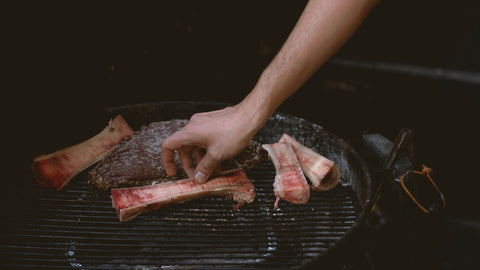Deboning Meat is a common task that most amateur cooks will encounter as their time and interest in the kitchen grows. While it is considered an advanced culinary skill in the professional world, it is still a task that can be achieved with the right knowledge and with practice.
To Debone or not - that is the question…
Knowing whether or not to debone a piece of meat or poultry is the first step. Despite popular opinion that keeping the bone when using a method such as roasting will enhance flavor, this is not the case. The reason being that the most flavorsome part of the bone (the marrow) has difficulty escaping from the bone where deboning has not occurred.
The confusion comes from situations where keeping the bone attached does assist in elevating the flavor as the marrow dissolves and breaks down. This is common where the meat is simmered or braised.
The benefits of deboning meat
In essence there are 5 major benefits to deboning meat:
- Speed of cooking - Deboning a piece of meat drastically reduces the total cooking time as bones take a much longer duration to heat up.
- Seasoning - In the absence of bones, it is easier to handle the meat. This allows the amateur cook to roll and stuff specific types of meat which enhances flavor and allows for the juicy moisture to be retained.
- Safety - By removing the bones, the meat has the opportunity to cook much more evenly, therefore avoiding the situation where part of the item may be drastically undercooked.
- Cheaper - Often if one does not wish to have bones present, but is reluctant to debone, then the piece of meat required for cooking will have been fully butchered. This means that the cost to purchase will be greater than buying a larger cut and deboning yourself.
- Carving the Meat - This goes without saying but it is much, much easier to debone a piece of meat that is now absent of bones.
The tools needed for deboning
Deboning meat all comes down to one decision. Choosing the correct knife to perform the task. Really, the choice comes down to two - a filleting knife vs a boning knife.
The boning knife option
The boning knife is clearly the best option when it comes to breaking down larger cuts of meat. The stiff blade that a boning knife possesses makes it ideal for handling the laborious task of removing sinew and bones. It is also very effective in making deeper cuts in thicker pieces of meat.
Main Boning Knife Features:
- Narrow blade
- Straighter edge
- Stiffer than a filleting knife
- Between 5-7 inches in length
The fillet knife option
Conversely, when it comes to fish then a filleting knife should be your tool of choice. This, in large part thanks to the flexible, curved blade that the filleting knife possesses. The result is a smoother cut that will remove fish bones in one fell swoop.
Main Filleting Knife Features:
- Narrow Blade
- Curved Blade
- Sharp Tip
- More flexible than boning knife
- Between 6 - 11 inches in length
Which knife is better for poultry
In the case of chicken, and other poultry, both knives can provide value. The boning knife is more useful when working through the larger sections of the bird whereas the filleting knife is handier in the smaller sections, and for removing skin and breast fillets.
Starting Points to Debone Meat
Each meat type requires a different technique when it comes to deboning , however there are starting points that must be adopted no matter the type of meat, fish or poultry being deboned.
The Need to Know Starting Points
- Ensure that your filleting or boning knife is sharpened prior to starting the process
- Take your time when starting out in order to avoid injury and to make careful cuts
- Always use your non-cutting hand to secure the meat that you are cutting into
- At the same time, make sure that there is plenty of space between where the knife and your non-cutting hand are situated
- For large meats and poultry use a sawing motion
- Conversely use a sweeping motion when filleting fish
- Assist the process by pulling meat clear of the bone as this will help with the separation process
Most Importantly take your time
In essence, it will take a reasonable amount of time to master the craft of deboning. The age old adage “practice makes perfect” can definitely be applied to the deboning process. The most important thing to remember is that you will need to take your time, and as your skills develop, you’ll find the deboning process gets much easier and more effective.
